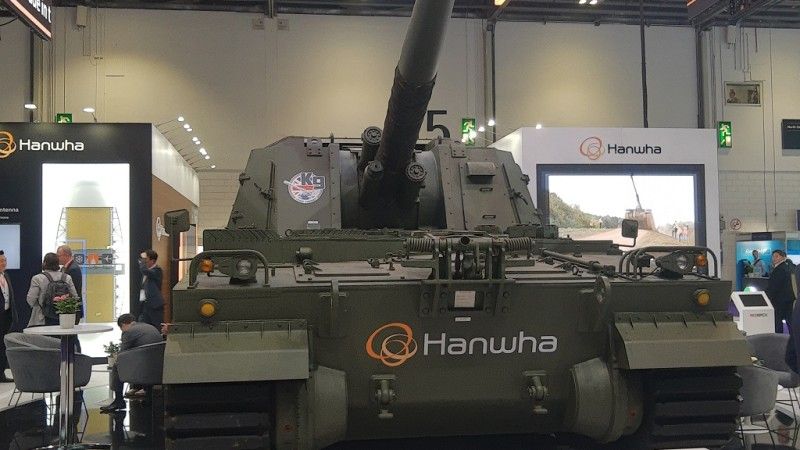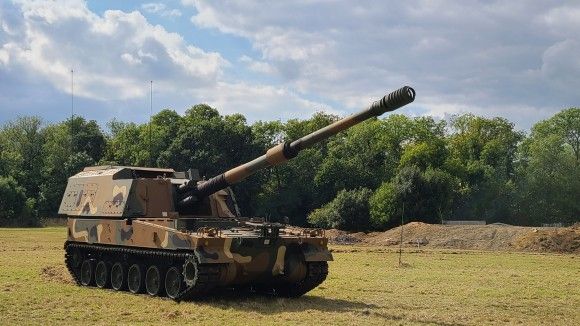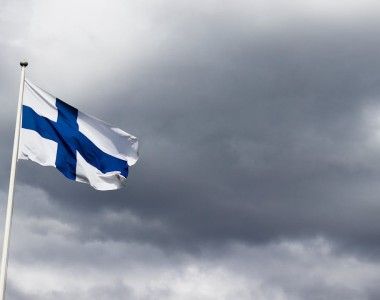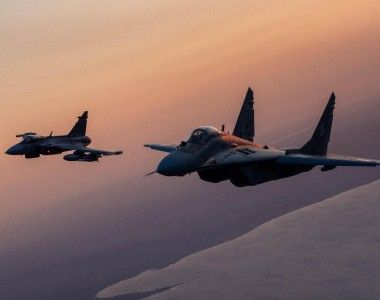
DSEI 2023: Hanwha Unveils the K9A2 Howitzer
Hanwha Aerospace unveiled a prototype of the K9A2 Thunder howitzer at DSEI 2023. The new system is to replace the legacy K9 and K9A1 variants - export hits of the Korean defence industry. The K9 howitzers are among the most common 155 mm self-propelled artillery pieces around the world.
The development process for this system has been quite dynamic to date. Ever since the baseline K9 Thunder was commissioned in the South Korean military in 1999, and then replaced by the K9A1 upgraded variant, the manufacturer also prepared several export versions. These include the K9FIN Moukari (Finland), K9EST Kõu (Estonia), K9 VIDAR (Norway), K9 Vajra-T (India) and AS9 Huntsman (Australia). Also, the Polish Krab self-propelled howitzer has Korean genes - in the form of a modified K9 chassis. This is not the final stage in the development of this Korean design. K9A2 model is being developed now for the Korean and British Armies. The latter seeks the replacement of the legacy AS90 platform in its Mobile Fires programme. At DSEI 2023 we had a chance to get up close and personal with this platform. It has also been a good opportunity to compare the new variant with the legacy ones.
Of course, one needs to take into consideration the fact that K9A2 is a prototype - many elements of its design could be changed. K9A1 chassis is still acting as the base platform, it cannot however be ruled out that the target platform would undergo further modifications, departing from the baseline standard. The turret system is a relevant novelty though. The main difference, compared to K9 and K9A1 is the larger rear niche of the turret housing three munitions magazines. Two for shells (one per side), and a third for the propelling charges (centrally arranged). These, along with automated ammunition feeders and ramrod, all together form a mechanized munitions feeding system - an autoloader unit.

Photo. Hanwha Defense
Rate of fire; Range; Autonomous Capacity
One needs to remember that the prototype turret would undergo further changes, and it would look a bit different in its final form that would be commissioned by the South Korean and British Armies, provided that K9A2 beats its competitors in the aforesaid MFP procurement. It could be assumed that the designers would implement Ukraine's lessons learned in the series-manufactured variant. The crew would go down to three: commander, gunner, and driver. What is relevant is the fact that the K9A2 would probably not use the heavier armoured carrier developed for AS9 Huntsman. The Korean and British Armed Forces did not make a demand for the current armour and IED protection levels to be heightened.
Further evolution of the system is expected for further variants, beyond K9A2, and it would include increased levels of autonomy. That means the crew would go down to two, and a single howitzer would also become a command vehicle. Meanwhile, the remaining guns forming the battery are expected to be unmanned and follow the manned platform. Range extension has been planned as well. The Koreans followed a path similar to the one adopted by the Americans, working on the commissioning of the M1299 self-propelled howitzer. Not only would that translate into an implementation of autoloader for rounds, and the propelling charges. The barrel length would grow from 52 to 58 calibres (to around 9 meters). This is to make it possible to obtain a range of 70 kilometres for conventional munitions. Special ramjet-powered projectiles are to allow these artillery pieces to reach targets at up to 150 kilometres.

Photo. J. Sabak
Howitzer modernized in that way would probably receive K9A3 designation. One should note, however, that the polonized K9PL variant would probably be based on the K9A1 integrated with the Topaz+ fire control system and other elements required by the Polish Armed Forces. It cannot be ruled out, however, that the Polish artillery component would start to gradually implement automated solutions when it comes to self-propelled howitzers. The reasons behind that may stem from the required increased rate of fire, and optimization of personnel needs in the area of armoured vehicle crews, as dictated by the Polish demographics.
Finally, there is one more interesting fact that needs to be mentioned. The K9A2 prototype unveiled at DSEI 2023 was fitted with the Canadian Soucy CRTs (Composite Rubber Track).

Photo. Damian Ratka/Defence24



